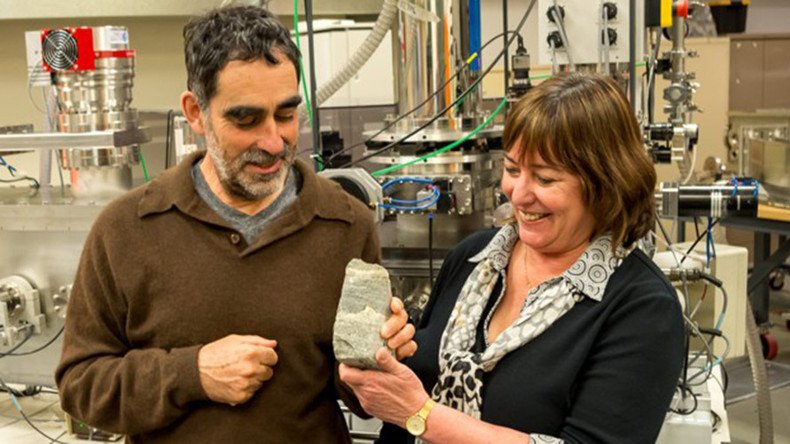Inside this rock is the oldest evidence of life on earth, and possibly Mars too

Global warming may lead to the end of this planet as we know it, but for now it’s helping reveal the oldest evidence of life on Earth.
Scientists believe the layers of fossilized bacteria in rocks discovered in Greenland are 220 million years older than any previously discovered.
The findings, published in the journal Nature, date the first life on Earth as 3.7 billion years ago, when the planet was in its infancy at a mere 800 million years old.
This implies that life developed on Earth a lot faster than previously believed – and our neighbor Mars, which was wet at the time, also could have hosted living organisms.
The oldest fossils known to date (3,700-million-year-old microbial formations) are reported https://t.co/thaeYM9cd9pic.twitter.com/MoqhQha17O
— nature (@nature) September 1, 2016
Known as stromatolites, the rocks are formed when microbes created a sticky mucus which trapped sand and minerals, slowly hardening into fossils over time.
Previously the Pilbara region of Western Australia was home to the oldest known stromatolites, dating back 3.48 billion years.
Stromatolites found in Greenland may indicate life on Earth over 3.7bn years ago pic.twitter.com/TIc197oVvs
— Colm McGlinchey (@ColmMcGlinchey) September 1, 2016
Allen Nutman from the University of Wollongong in Australia was a member of the team that made the discovery in southwest Greenland.
“If life could have evolved so quickly on Earth, there’s no reason why it couldn’t have evolved on Mars, which raises the possibility of detecting signs of ancient life on Mars,” Nutman told The Atlantic.
From history-defining discoveries to mentoring young geologists, Prof Allen Nutman is forging the golden age of rock https://t.co/ipXndspeh6
— UOW (@UOW) September 1, 2016
The discovery came about as a side effect of global warming when a team of geologists noticed strange rocks sticking out from thawing snow in the Isua region in southwest Greenland.
“All of us suddenly thought: ‘Ah! We know what we think these are!’ We were very excited,” Nutman said.
Heavily distorted over time, the rocks were identified by the team as stromatolites due to their shape, which has steep sides that poke out of shallow water.
They were so sure of the huge significance of these rocks that the team sat on their findings for four years to ensure they were accurate before publication.












